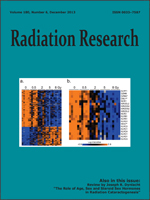Astronauts working and living in space are exposed to considerably higher doses and different qualities of ionizing radiation than people on Earth. The multilateral MATROSHKA (MTR) experiment, coordinated by the German Aerospace Center, represents the most comprehensive effort to date in radiation protection dosimetry in space using an anthropomorphic upper-torso phantom used for radiotherapy treatment planning. The anthropomorphic upper-torso phantom maps the radiation distribution as a simulated human body installed outside (MTR-1) and inside different compartments (MTR-2A: Pirs; MTR-2B: Zvezda) of the Russian Segment of the International Space Station. Thermoluminescence dosimeters arranged in a 2.54 cm orthogonal grid, at the site of vital organs and on the surface of the phantom allow for visualization of the absorbed dose distribution with superior spatial resolution. These results should help improve the estimation of radiation risks for long-term human space exploration and support benchmarking of radiation transport codes.
How to translate text using browser tools
19 November 2013
The MATROSHKA Experiment: Results and Comparison from Extravehicular Activity (MTR-1) and Intravehicular Activity (MTR-2A/2B) Exposure
Thomas Berger,
Paweł Bilski,
Michael Hajek,
Monika Puchalska,
Günther Reitz
ACCESS THE FULL ARTICLE

Radiation Research
Vol. 180 • No. 6
December 2013
Vol. 180 • No. 6
December 2013




